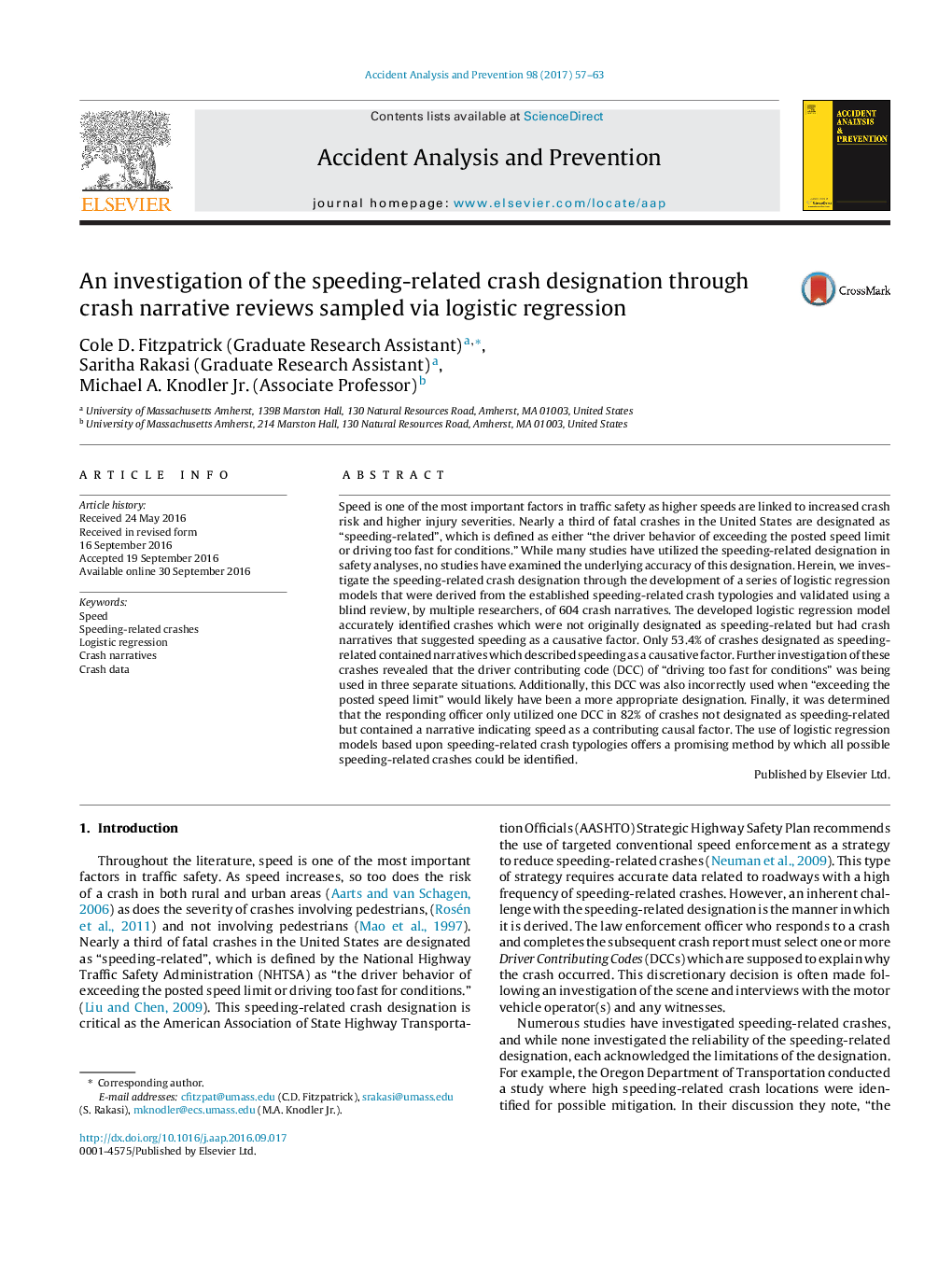| کد مقاله | کد نشریه | سال انتشار | مقاله انگلیسی | نسخه تمام متن |
|---|---|---|---|---|
| 4978816 | 1452900 | 2017 | 7 صفحه PDF | دانلود رایگان |
- Logistic regression models were created based upon an existing speeding-related typology.
- A crash narrative review investigated the true crash causation.
- The models identified crashes which should have been classified speeding-related.
- Based on findings, one of the driver contributing codes should be split into three.
Speed is one of the most important factors in traffic safety as higher speeds are linked to increased crash risk and higher injury severities. Nearly a third of fatal crashes in the United States are designated as “speeding-related”, which is defined as either “the driver behavior of exceeding the posted speed limit or driving too fast for conditions.” While many studies have utilized the speeding-related designation in safety analyses, no studies have examined the underlying accuracy of this designation. Herein, we investigate the speeding-related crash designation through the development of a series of logistic regression models that were derived from the established speeding-related crash typologies and validated using a blind review, by multiple researchers, of 604 crash narratives. The developed logistic regression model accurately identified crashes which were not originally designated as speeding-related but had crash narratives that suggested speeding as a causative factor. Only 53.4% of crashes designated as speeding-related contained narratives which described speeding as a causative factor. Further investigation of these crashes revealed that the driver contributing code (DCC) of “driving too fast for conditions” was being used in three separate situations. Additionally, this DCC was also incorrectly used when “exceeding the posted speed limit” would likely have been a more appropriate designation. Finally, it was determined that the responding officer only utilized one DCC in 82% of crashes not designated as speeding-related but contained a narrative indicating speed as a contributing causal factor. The use of logistic regression models based upon speeding-related crash typologies offers a promising method by which all possible speeding-related crashes could be identified.
Journal: Accident Analysis & Prevention - Volume 98, January 2017, Pages 57-63
